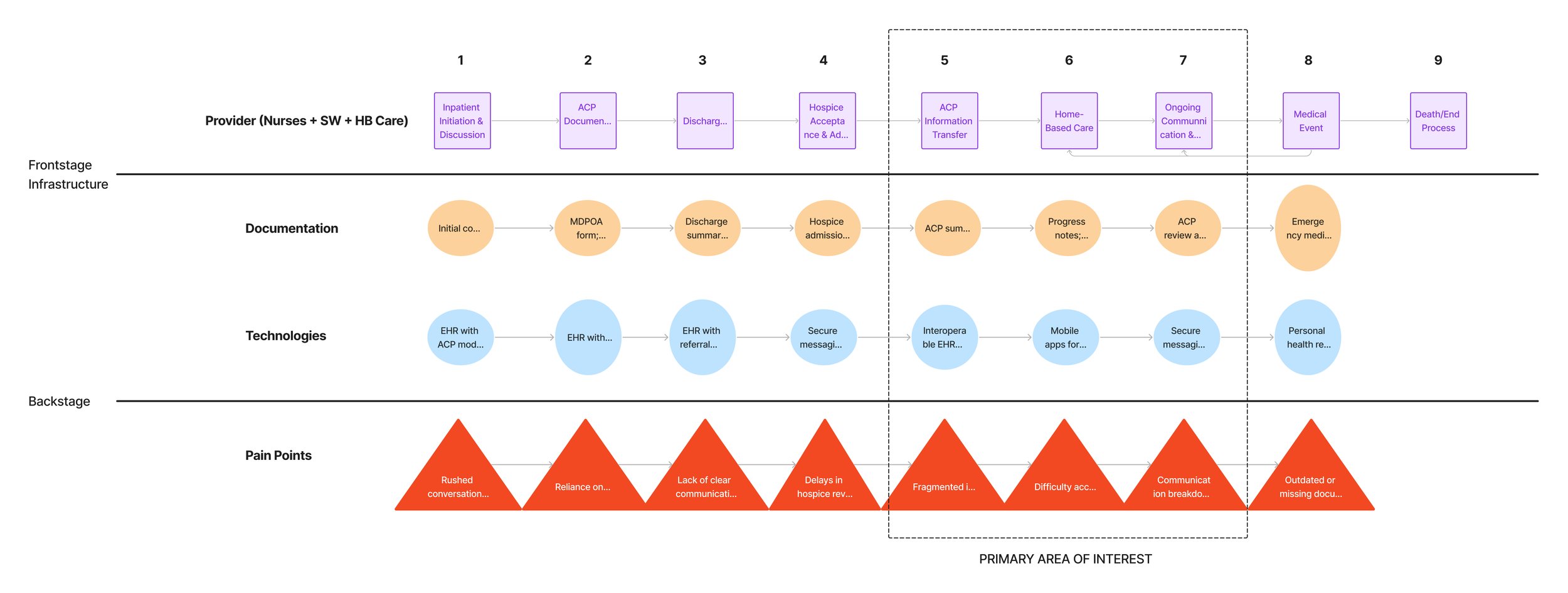Organizational System Design
Designing More Efficient Data Management Technology for Patients, Families & Clinicians

Design Framing
In this user experience research, I collaborated with community hospital partners, clinicians, patients, and their family members to improve the efficiency and usability of hospital software like Electronic Medical Record software (e.g., EPIC). My work was in working with multiple stakeholder groups in the healthcare system to envision organizational and technical solutions for the transfer and use of critical value documentation in clinical settings, especially around Advance Care Planning (ACP). While systems exist to collect this information, breakdowns occur in documentation, communication, and access—creating friction and harm. As an interdisciplinary team, our aim was to redesign organizational and technical systems to better meet stakeholder needs.

Methods
- Narrative Network Analysis of documentation workflows between hospitals and hospices
- Semi-Structured Interviews with 30+ palliative care providers across hospitals and hospices
- Thematic & Axial Coding of qualitative transcripts to identify workflow pain points
- Speculative Co-Design to visualize ideal workflows with providers
This multi-method approach captured systemic breakdowns while giving us a window into provider-led innovation. Our team collaborated with physicians, nurses, social workers, documentation specialists, IT teams, and chaplains.



Key Challenges
- Unstructured value documentation lost in EHRs (e.g., PDFs, scanned forms, notes)
- Lack of fields for nuanced patient wishes (e.g., spiritual values, emotional priorities)
- Hospice providers unable to retrieve or act on hospital-entered values
- Incompatible EHRs and reliance on workarounds (e.g., fax, phone, post-it notes)

What We Built Together
Through our speculative design interviews, we created a six-stage model of an ideal ACP documentation workflow, emphasizing flexible, iterative value elicitation and clearly assigned provider responsibilities for care plan creation.
- Storytelling → Value Identification → Clarification → Care Plan Creation → Member Checking → Formal Documentation
- Attributes: Iterative, Relationship-Centered, Emergency-Accessible


Real World Impacts
- Healthcare system implemented revised ACP interface with structured narrative fields
- New training rolled out across palliative care and oncology departments for collaborative documentation
- Hospice teams reported 2× faster care plan creation due to improved record access
